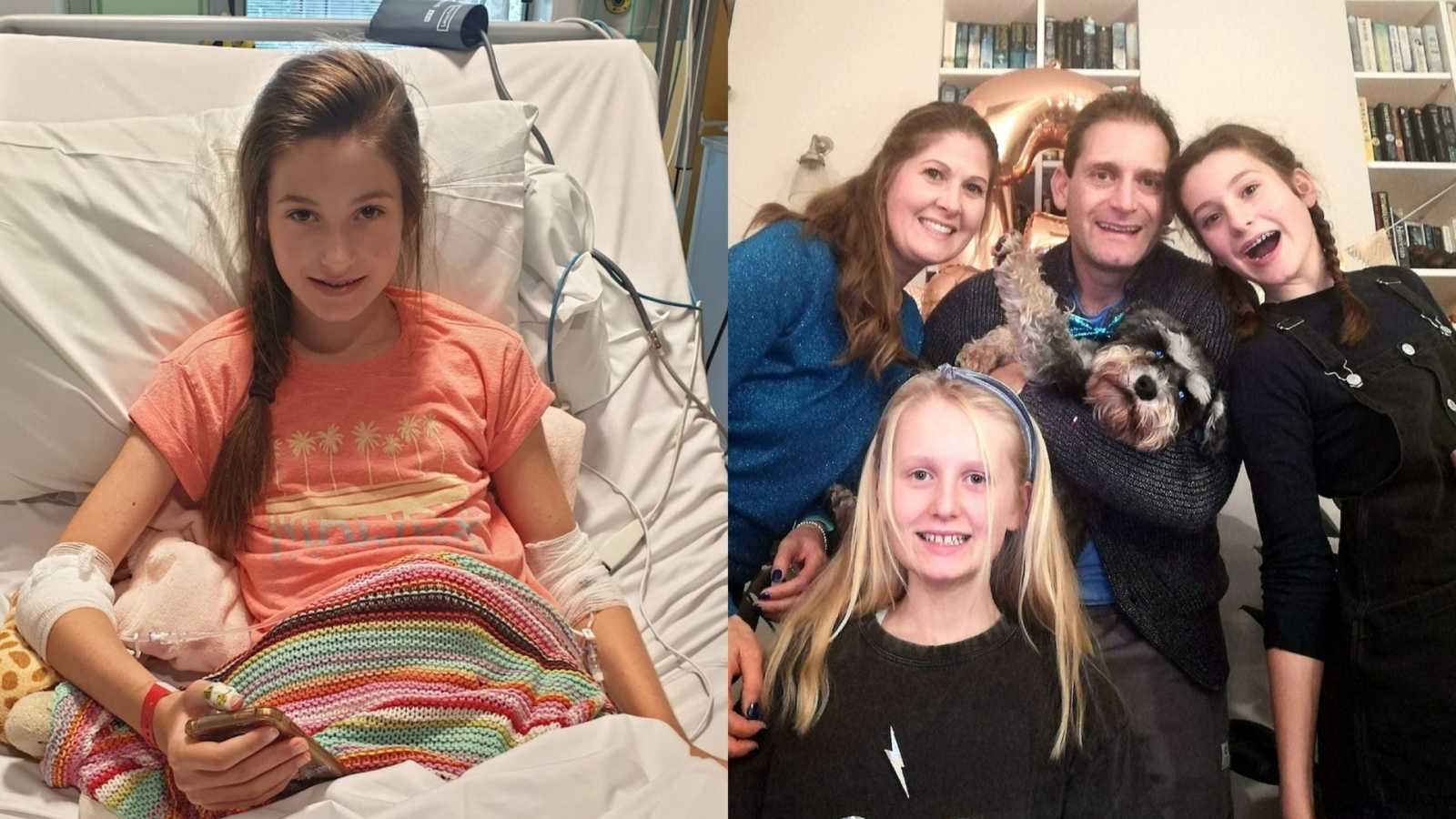“This month marks the one-year ‘Diaversary’ of our daughter’s diagnosis of type 1 diabetes. It marks a point in which our family life changed forever. It is a transition I would not wish for any other family to have to experience, but I hope that for those who may read our story it will show that as a family you will find courage, patience, resilience and most of all, strength from learning to care for and live with type 1 diabetes.
It is almost strange thinking it’s only been a year, as sometimes it really feels much longer than that. There have been some very long days (and nights), learning to come to terms with this invisible illness alongside having to medically manage a condition that can impact so much of your day-to-day life. But getting to the point of diagnosis can be as equally as frustrating, scary and confusing.
For us, we watched our daughter disappear before our eyes, not only physically, but emotionally as well. For quite some time we knew that everything was not quite right. We were still in lockdown and home-schooling, so she was with me every day. At first, you notice little things like becoming a bit slimmer and more lethargic. But she was just about to enter her teens, she had a huge growth spurt over a short period of time and it was exceptionally warm that summer. Well, these are the things that I kept telling myself to normalize what I was noticing. But then it just became even more noticeable. She was always in the loo, couldn’t go to bed without taking a massive cup of water, would wake in the night to drink even more water, and would want to sleep in the day.
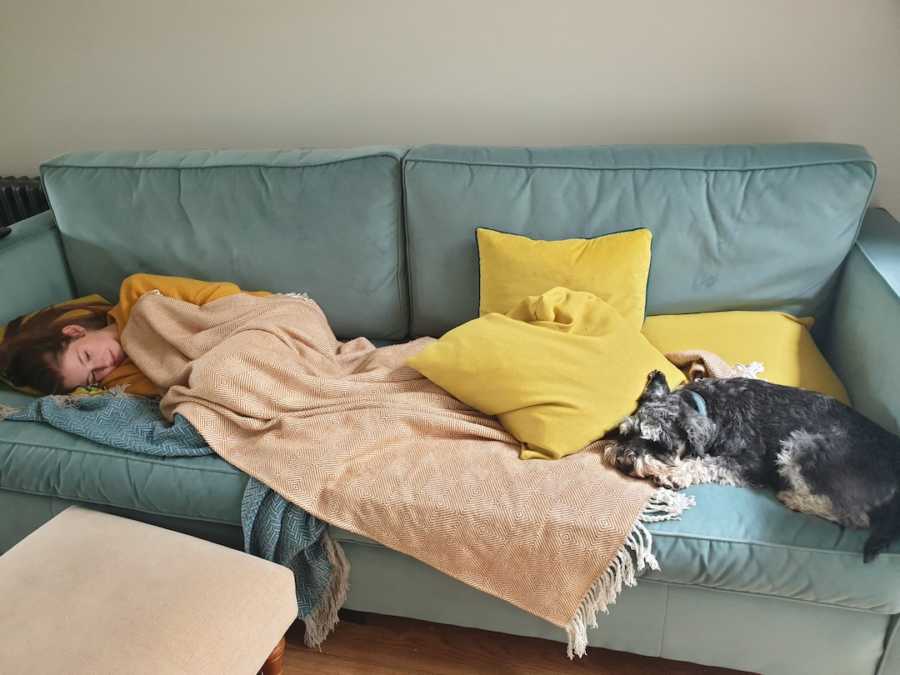
I still berate myself for how long it took me to call the doctors to have that first conversation, but I guess that comes with the territory, a never-ending cycle that is parental guilt! It had got to the point where she was so thin that it just didn’t look healthy, was so tired, was so thirsty, it just wasn’t right. Once we did manage to see our local doctor, as initially, it was all phone-based due to Covid, it was a total whirlwind.
We went from a suspected diagnosis of type 1 diabetes by the GP to being told to rush her to the hospital because she was in diabetic ketoacidosis. Upon our arrival we were then swarmed, it felt like, by so many people. My daughter was surrounded by numerous nurses and doctors taking samples, putting cannulas in, asking lots of questions, which I struggled to answer. In the space of possibly an hour, it was confirmed, she had type 1 diabetes. Now at this point, you would think that you would feel like the rug had been swept out from under your feet. But I didn’t. I genuinely don’t know what I was feeling. I was so numb and shocked that I just wasn’t able to process the enormity of the situation.
After Covid tests, which was an added experience in itself, we were admitted to the children’s ward, to begin the slow process of recovery and understanding what our new reality was. One vivid memory I do have, however, is despite Olivia looking like a patient you watch on Grey’s Anatomy rigged up to monitors that never seemed to stop beeping and cannulas delivering much needed fluid and insulin; she was smiling. I could finally see my daughter returning to us.
Initially, the relief in getting the diagnosis outweighed the severity of the condition for me. I honestly had no idea at that point what living with type 1 diabetes really meant and how it would change us. Doctors and nurses explained things. We listened, but I am not sure really how much we took in. It was just myself and Olivia in the hospital as only one parent could be there. So, my job was to relay the information back to my husband and youngest daughter, Isabelle, at home. I somehow managed to stop myself from Googling everything under the sun, although I am not sure that was the same for my husband. My focus was with Olivia, as I was there, but for him and Isabelle, they were having to deal with pretty poor second-hand updates.
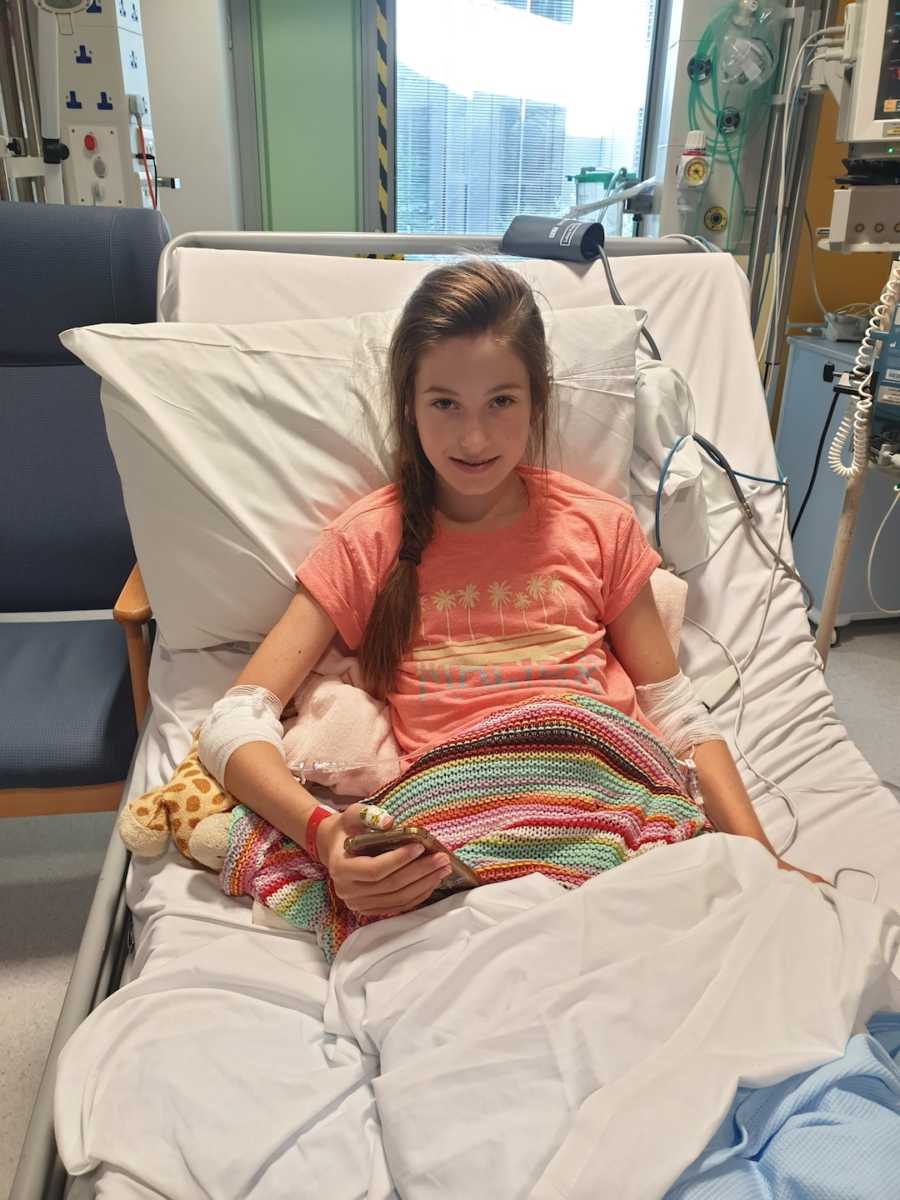
Finally, after lots of information from medical professionals, lots of listening and nodding, lots of very quick ‘on the job’ training, practicing a few insulin injections, having had very little sleep and given a massive amount of ‘diabetes stuff,’ you’re told it’s time to go home. I don’t know if I have ever been so relieved and scared all at once. It’s a little similar to coming home with your baby for the first time. The panic and worry really set in at this point and you massively question your ability as a parent and wonder if you are going to be able to do this. The good news is YES, you absolutely can!
In the first week, I couldn’t quite work out what all the fuss was about, which feels awful to write down now. I felt like I was in this bubble. Olivia still had pretty high blood glucose, which is typical when coming out of diabetic ketoacidosis. Not a huge amount seemed to have changed in our daily life, although at that point, daily life wasn’t exactly normal for anyone. Initially, we saw it as just having to do some injections with the meals, we had to remember the night-time basal injection, both of which were all still a novelty at that point, and we would wake up in the night to check bloods. This all seemed very doable. But the enormity and reality of trying to become a pancreas for your child hadn’t really quite kicked in.
At this point, we still hadn’t quite figured out the whole management side of things, how different foods can really impact blood glucose control, we hadn’t experienced a hypo (low blood glucose levels) particularly at night, we hadn’t started with any tech and consequently started living our lives, monitoring apps, listening out for alarms or weeks without an uninterrupted night’s sleep. I don’t mean this list to sound alarming as over time this will become your new normal, but as with any invisible illness so much is hidden.
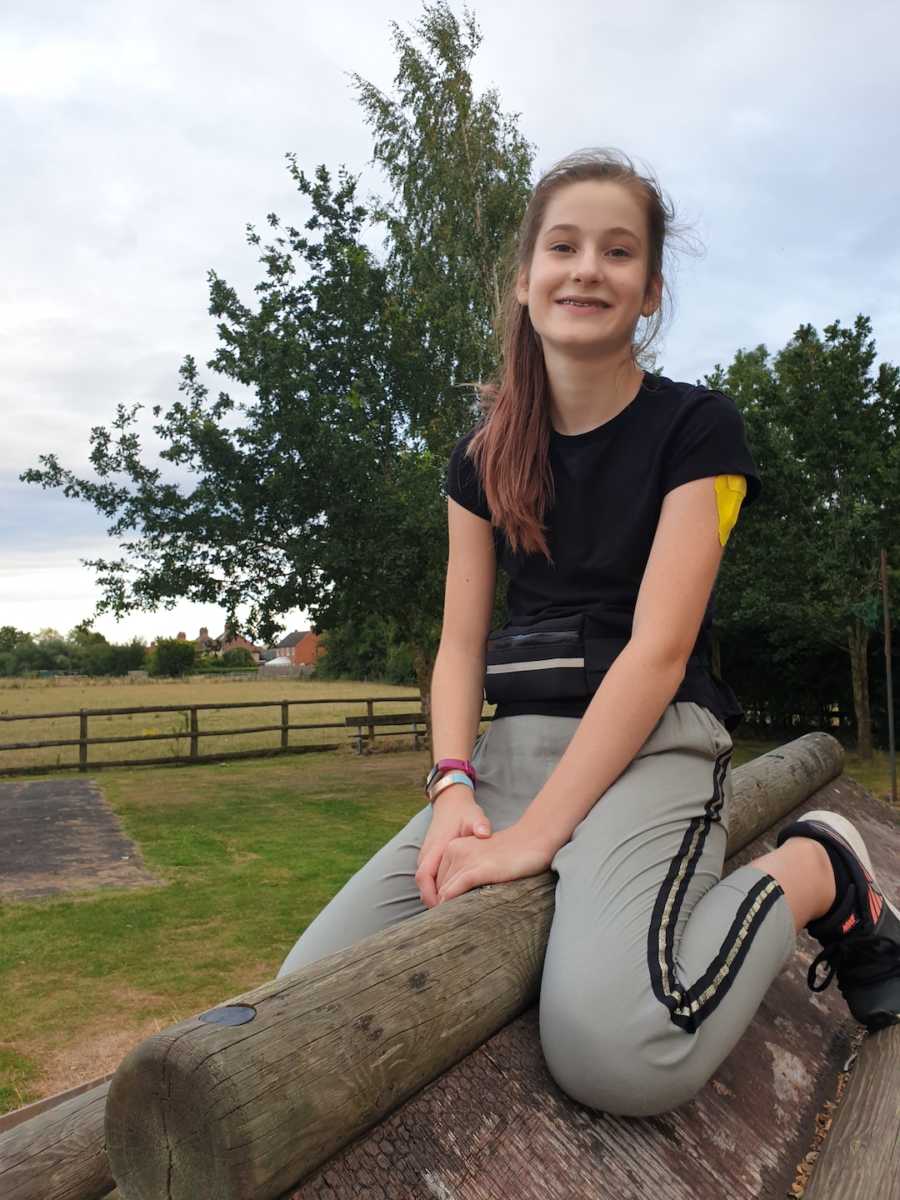
As gradually we started to become aware that there was more to managing diabetes, my husband and I threw ourselves into learning and understanding as much as we could about this condition. I became the dietician and general day to day carer, my husband took on the tech side of things, and we both read a lot. We threw ourselves into all the practicalities, which there are a lot of when organizing all that comes along with living with type 1 diabetes.
As a parent, it can become easy to fall into solutions, organization and planning, unknowingly pushing aside the other wonderful aspects of being a parent. It is easy to fall into the trap of not allowing yourself time to grieve and confront the emotions that come alongside any lifelong condition.
When a diagnosis of Type 1 diabetes happens in childhood, the consequences impact the whole family. Like a bolt out of the blue, this thing comes into your life. You didn’t ask for it, you don’t know why, and no one can explain why. You can’t get rid of it; you just have to learn to live with it. You can’t stop thinking about it; it takes up a huge amount of your day. You wonder how your child will lead a ‘normal’ life. You wonder if your family life will ever be the same again. You worry all the time.
As parents, you can see your role evolving into a medical caregiver, a dietician, a mathematician, a technical wizard, an advocate, and a logistics expert. As a sibling, you feel lost and confused by all this strange jargon and constant talk about diabetes. You have to adapt to your parents spending what may feel like most of the time with the sibling with diabetes.
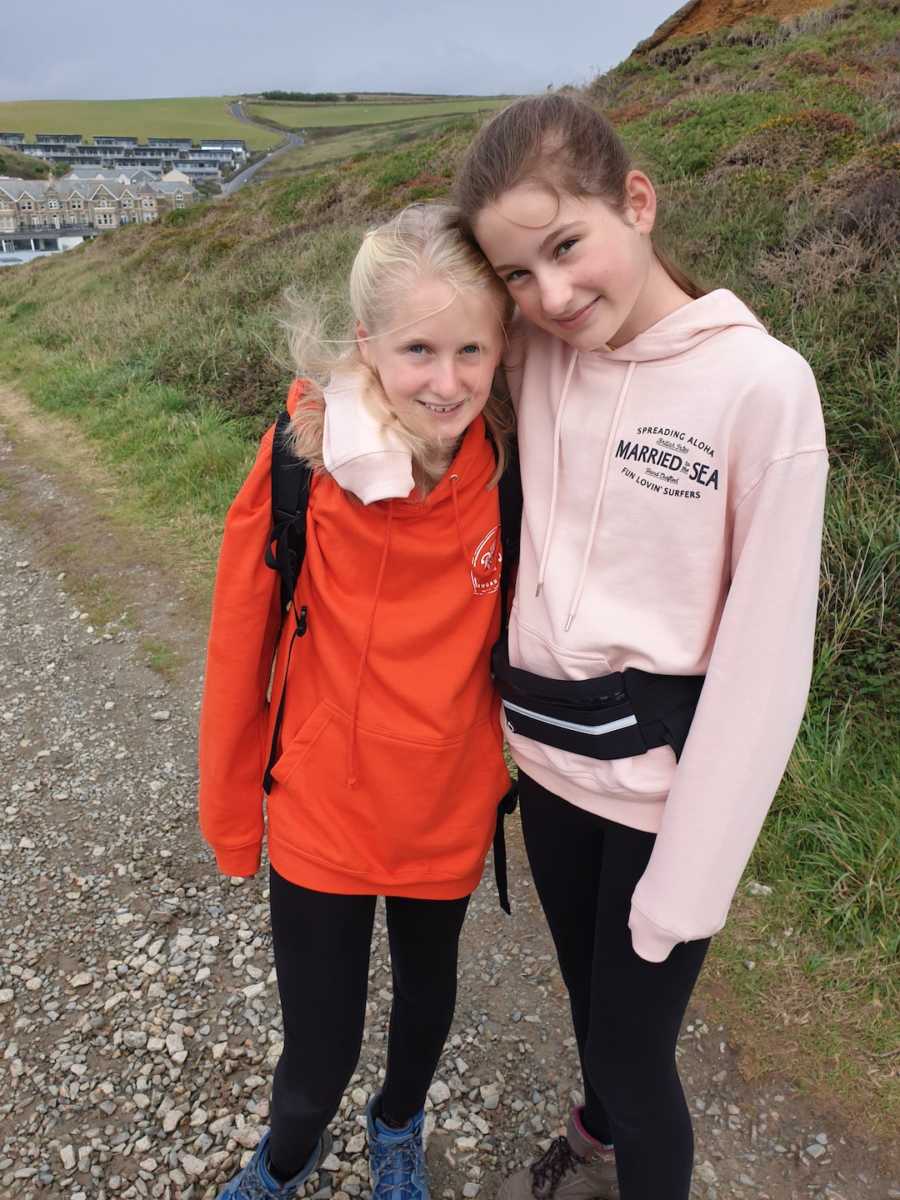
But family life does go on. You learn how to manage the many aspects of the condition. You learn about food and how to carb count. You learn to live your life by an alarm. You learn to live with interrupted sleep (it still sucks though). You learn to live in a world of constant monitoring and talk about levels. This all becomes your new normal. You still worry, but maybe a little differently.
One year on from our transition into living with diabetes as a family, I know you are by no means alone in this journey. There is a wonderful community out there, where ever you are in the world. Reach out to charities, your local community, groups or individuals on social media. There is always someone who has experienced what you’re feeling right now and wants to help or just simply listen.
Give yourself time to grieve for your previous life and experience all the negative emotions that come alongside the diagnosis. Perhaps, if you’re like me, address the guilt you feel that this could happen to your child and there is nothing in the world you can do to take this away for them.
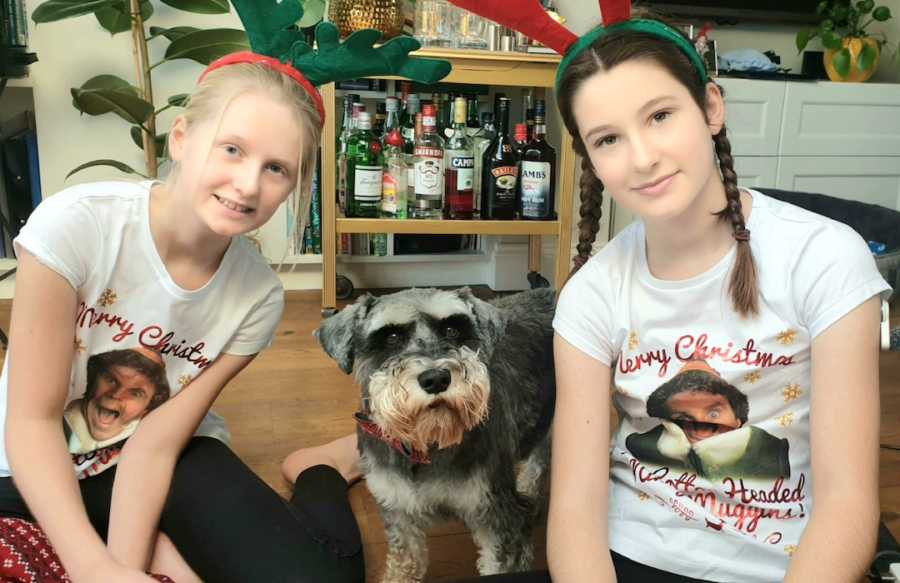
Give yourself plenty of time to adjust to your new ‘normal’. You cannot come to terms with this in a matter of days or weeks. It takes a long time to process and feel anywhere near like you have a handle on it.
If you have a partner or close family or friends then lean on them, teach them, share with them. You can’t take all of this on your shoulders alone. You need support even if it just for someone to reassure you that you are doing a great job.
Family life does carry on, it’s just a bit different, more considered and involves a lot more kits.
You can do everything that you did before or would wish to do in the future.
You can still enjoy food and don’t need to be scared of it. You don’t have to radically change what you eat, but by making more considered choices you can help your child’s blood glucose management.
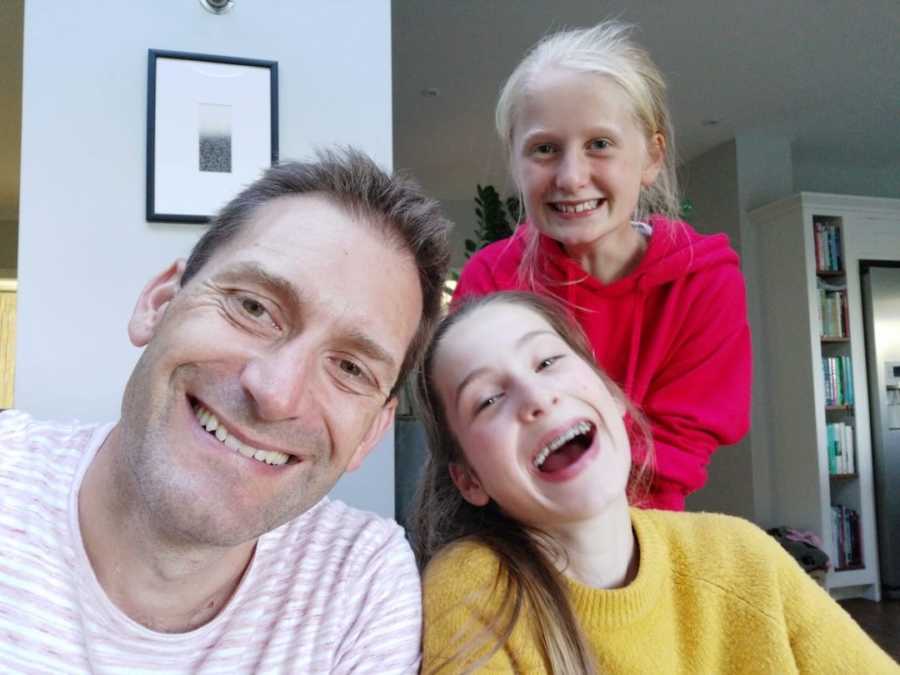
Our type 1 diabetes diagnosis changed us as individuals and as a family, but it doesn’t define or limit us. We have had some really tough days, but I feel that we are emerging from this experience with greater positivity. This has made us a stronger family unit, shaped some of our paths, and highlighted the sheer resilience we can have.”
This story was submitted to Love What Matters by Michelle Rorke from Kent, England. You can follow their journey on Instagram, Facebook, and their website. Do you have a similar experience? We’d like to hear your important journey. Submit your own story here. Be sure to subscribe to our free email newsletter for our best stories, and YouTube for our best videos.
Read more stories like this here:
Provide beauty and strength for others. SHARE this story on Facebook with friends and family.

